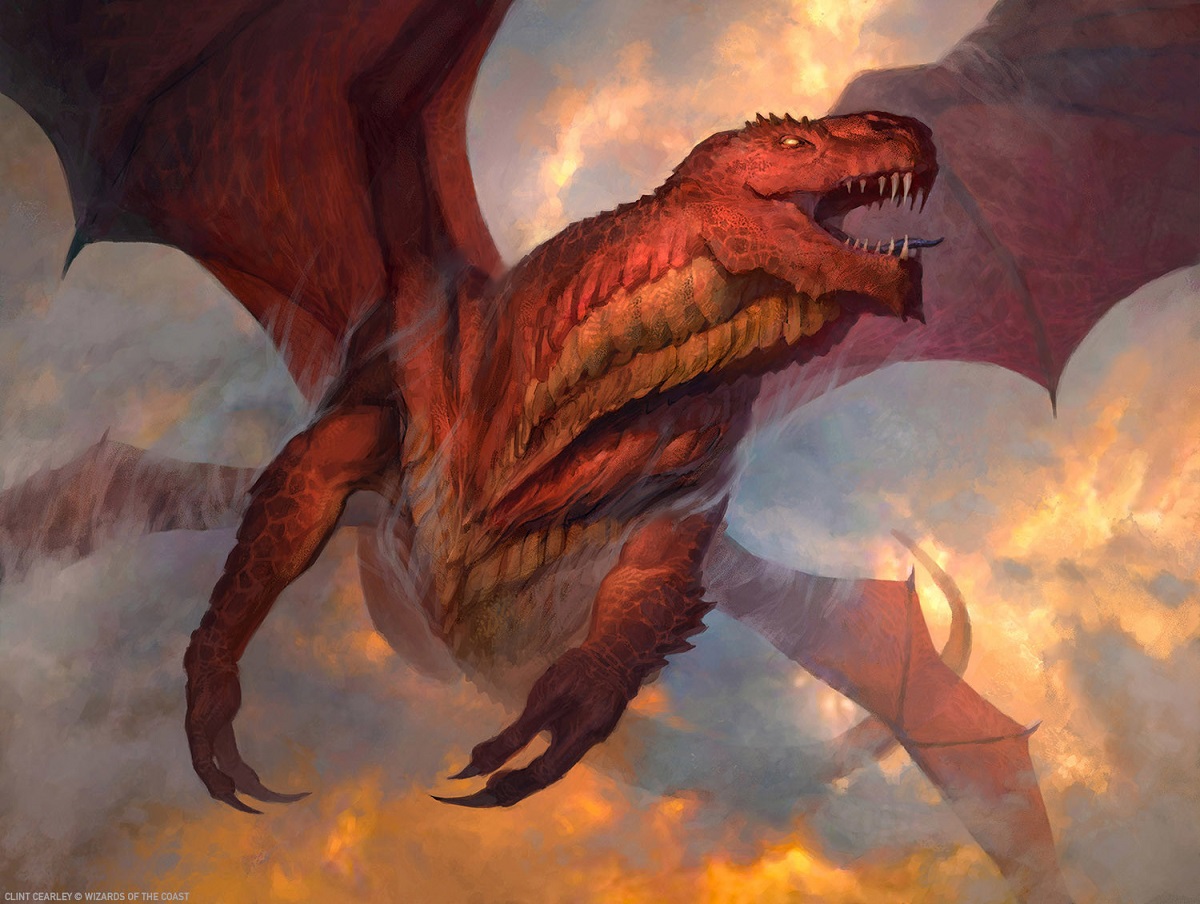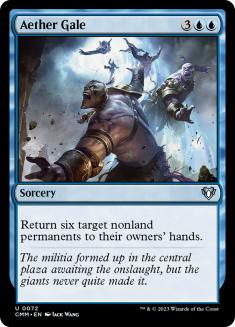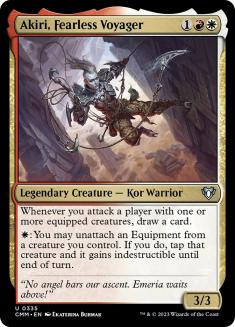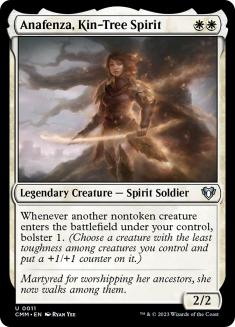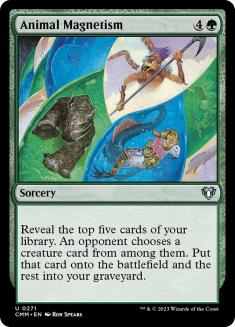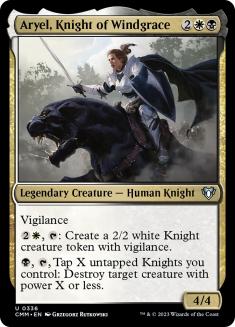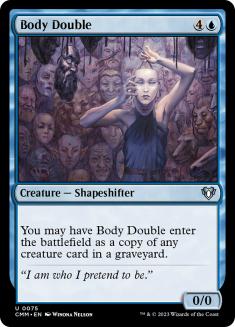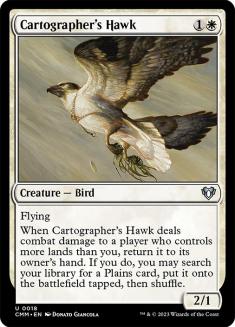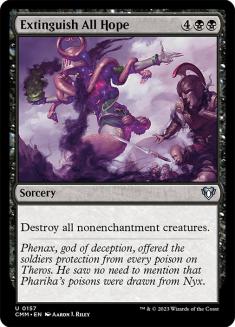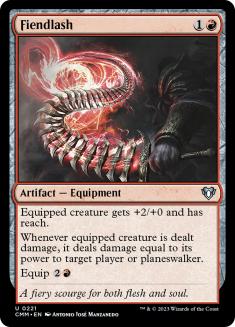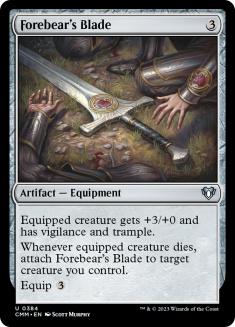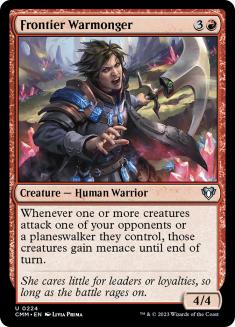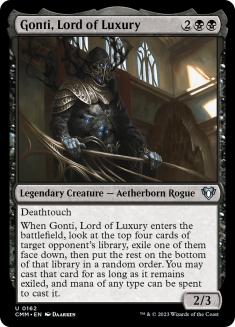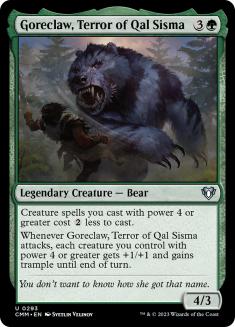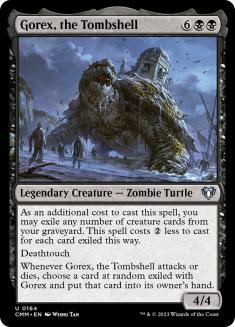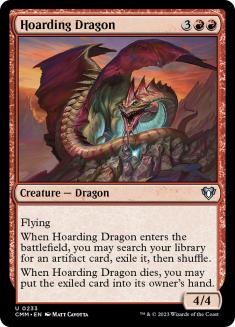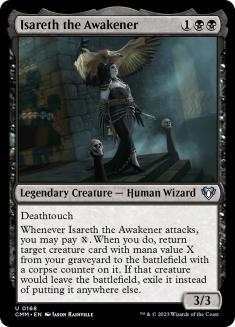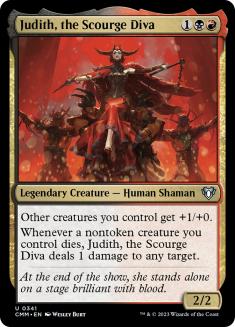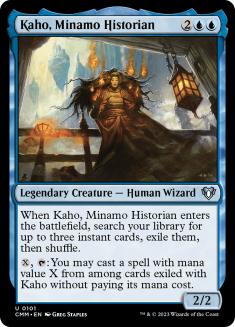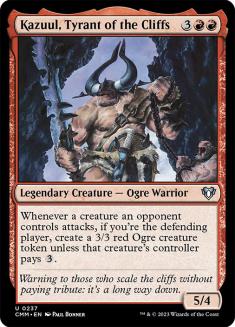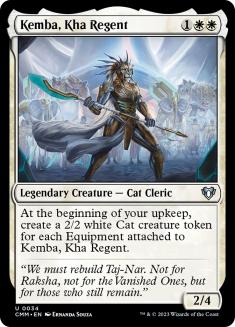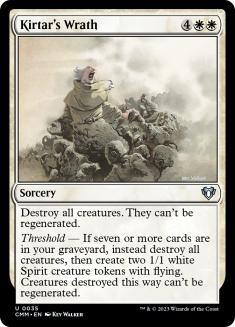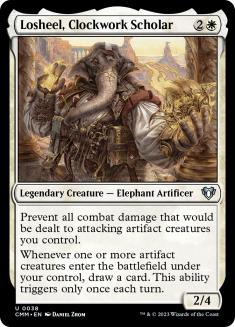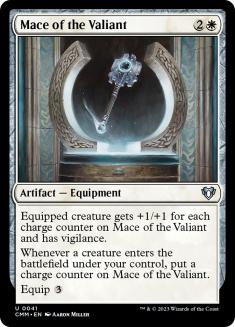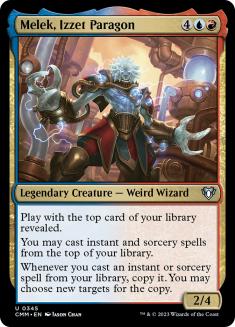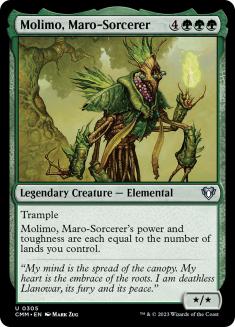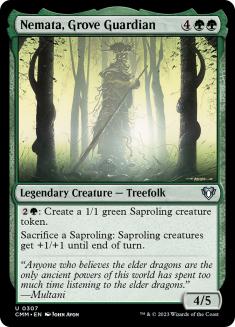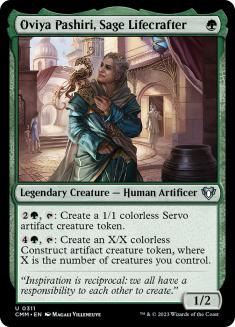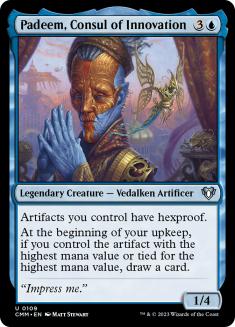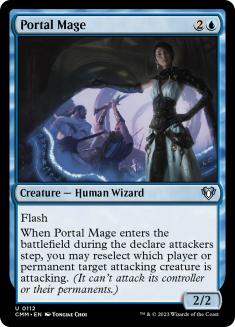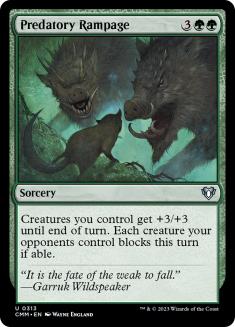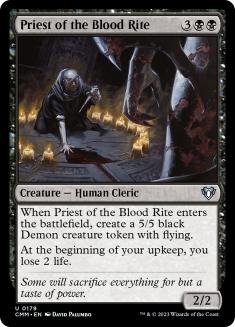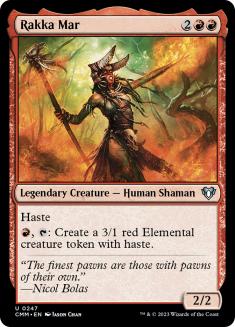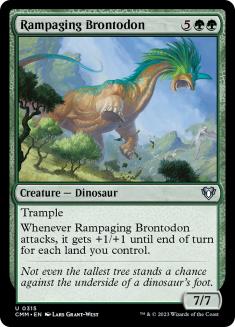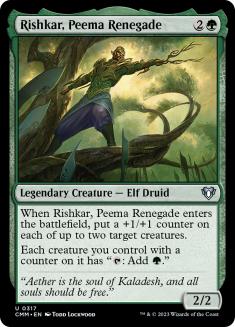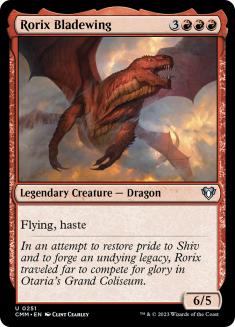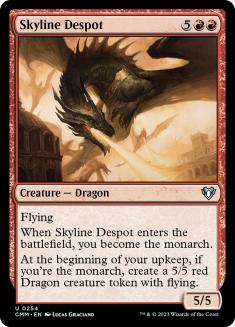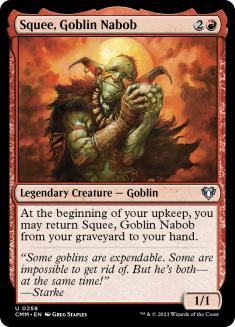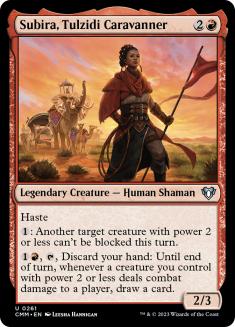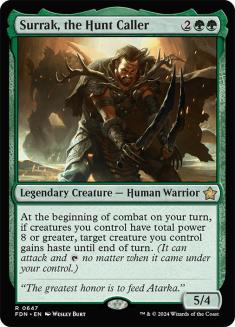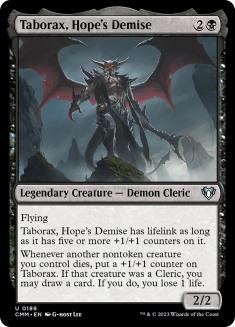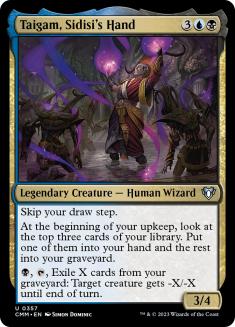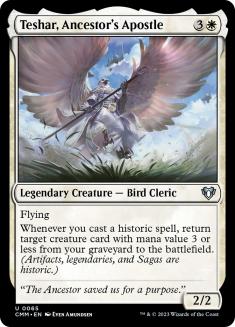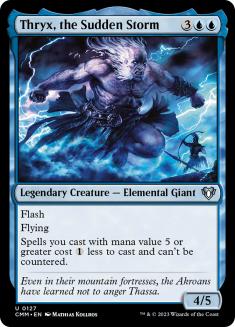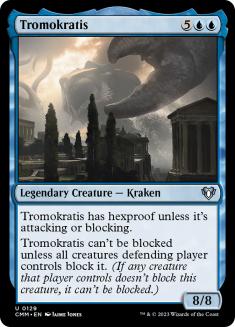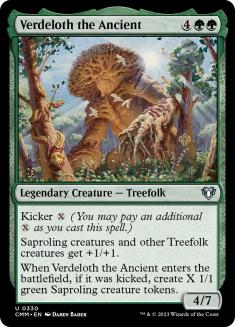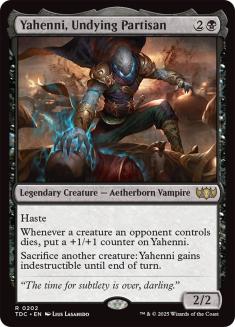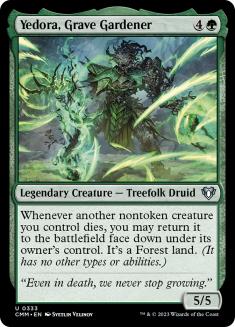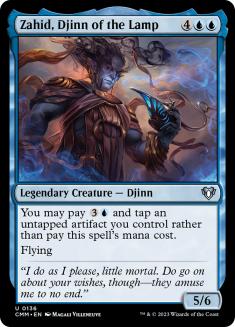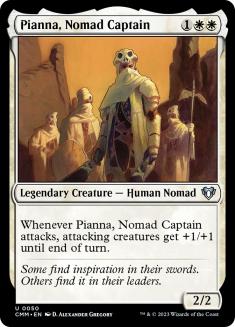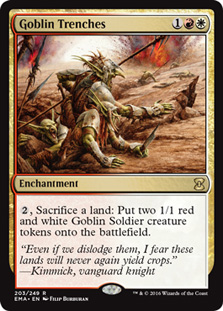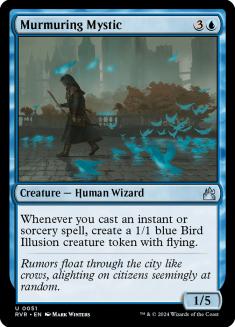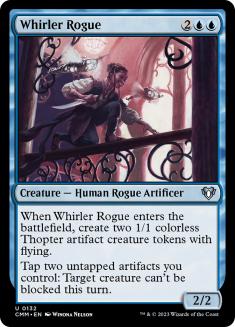Hello again, gamers! Last week, I went over an update that I made to my Pauper Twobert in light of Commander Masters rarity downshifts, and this week I’ll be doing the same for my Peasant Twobert! Peasant is a much different beast from Pauper, so the texture of the update I made to my Peasant environment is understandably quite a bit different from the one I made for Pauper. I’ve apparently had the Peasant Twobert together for over two years, so before I dig into things, it seems relevant to link the inaugural article for the Cube:
Peasant (and by extension my Peasant Twobert) lends itself to a lot more build-arounds than Pauper. As such, Peasant environments can more deeply explore themes than Pauper ones, especially when you account for gold support and signpost uncommons that we’ve come to expect in every set. Because it was already designed with stronger themes in mind, my Peasant Twobert isn’t in need of as radical a redesign as my Pauper one got, but I did make some fundamental changes with my most recent update.
The Downshifts
Before we get to that, let’s take a look at every card downshifted to uncommon in Commander Masters:
A lot of these changes happened to make more legendary creatures available at lower rarities for Limited, and these shifts do add more support to some themes that had less support in Peasant previously. Equipment as a theme is the big winner here, with artifacts generally getting a boost. Sacrifice and sweepers get nice support, too, and just generally there are some quality upgrades in terms of rate for the format at large!
A significant aspect of the update I made to my Peasant Twobert in light of these downshifts is that I have decided to remove Shrines as a supported archetype for the Cube. I did enjoy drafting them, but I found they warped the environment too heavily, and I could free up a lot of space for new cool things by cutting them and the long list of cards in the Cube that existed mostly to answer them. Further, they have a promised home in an Enchantress Cube when I finally get around to building one, so this isn’t the end of the road for Shrine fans like me!
You can find my updated list on Cube Cobra to follow along as I break things down. Now let’s take a look at the Cube by color in terms of what the supported themes are in that color and what Commander Masters contributes!
White
Pianna, Nomad Captain was already technically an uncommon due to the Magic Online (MTG) release Vintage Masters, but this was the first paper printing. This matters to me more for Peasant than Pauper; Pauper is a relatively popular Constructed format, which lends legitimacy to digital-only weirdos, whereas in Peasant, a gold set symbol is something of an eyesore. I’m eagerly awaiting a paper uncommon printing of Goblin Trenches for this very reason!
The two major themes in white are tokens and blink, with creatures that generate tokens, like Cloudgoat Ranger, really bridging the gap between the two. Kirtar’s Wrath serves as both an answer to the go-wide strategies of the Cube and a way for token decks to catch up when they fall behind and start rebuilding. The wombo-combo to reset the battlefield and then immediately take over with Shrine of Loyal Legions is my favorite application of this new downshift.
Anafenza, Kin-Tree Spirit is another piece of support for Persist Combo, which is among the more powerful archetypes to strive for in this Cube. I also added Putrid Goblin in this update to make these decks more consistently draftable, and deleting Shrines and enchantment removal opened up some space for more spot removal to fight these combo decks as well. Supporting this combo is the aspect of the Cube that I’m watching most closely; similarly to Shrines, it does have the potential to define the play experience more than I’d like. An infinite life combo with Kitchen Finks instead of Murderous Redcap or without a Blood Artist or Goblin Bombardment to actually end the game can be really tedious, so the more likely it seems that that will happen regularly, the less likely the combo is to stick around.
Blue
Blue has the strongest roots in “spells matter”, with Rise from the Tides being the big payoff in blue. I didn’t actually add any of the new blue downshifts to the Cube, but I did decide to add Murmuring Mystic as another payoff for blue’s major theme at the expense of Whirler Rogue, a card that I decided technically fit what I was doing in blue but stuck out a little too much in the way it did so.
Blink is a secondary theme for blue, with Soulherder being the card that would really push you to draft a blue blink deck. I don’t feature any blue spells that blink permanents, and the support that blue offers for blink decks comes in the form of cards like Watcher for Tomorrow and Man-o’-War offering powerful enters-the-battlefield abilities. Whirler Rogue did something similar, but the card is just a little too individually powerful as a token maker to be especially interesting, especially considering that tokens aren’t a theme otherwise supported in blue and artifacts are barely present in the Cube otherwise.
Whirler Rogue is one of the most powerful blue uncommons ever, and I would definitely expect to see it in larger Peasant Cubes, especially those opting for some of the new downshifted artifact support cards like Zahid, Djinn of the Lamp. It just stuck out a bit too much here, and I find that the blue slots were better off with more spells and explicit support for spells matter decks.
Black
Black has the most self-contained theme in the Cube with devotion payoffs, but the creatures that it uses to do so play well with blink themes or as food for Spider Spawning. It offers the most support for Sacrifice decks as well as some strong removal for the spells decks to pick up. In one way, black points to a mono-color deck, but in a lot of others ways, it’s a powerful support color.
Removing the black Shrines opened up some space for more creature removal, and I decided to give the newly downshifted Isareth the Awakener a go. It’s not expressly a payoff for devotion or Spider Spawning decks, but the recursion and solid body that it offers allow it to show up in both and be very relevant in some games.
I’d expect the Gonti, Lord of Luxury downshift to show up in a lot of other Peasant Cubes, but I personally strongly dislike the play patterns of the card for Cube. Specifically, I find it really deflating when cards like Gonti steal a card that’s fundamentally important for my deck, with Rise from the Tides and Spider Spawning being the loudest examples in this Cube. Gonti is definitely a card that a lot of players find very fun. It’s just not for me.
Red
Red offers powerful tools for spells matter and Sacrifice, and has a small nod to Goblins with Battle Cry Goblin that plays with the smattering of other Goblins and bleeds into black with Sling-Gang Lieutenant to offer some powerful synergies that don’t show up in every draft.
Rorix Bladewing doesn’t fit with any of the themes in the Cube, but is one of my favorite cards of all time and I just couldn’t live with myself if I didn’t give this downshift a home here. For the most part, Rorix is worse than Amethyst Dragon, but big haymakers are something that I like to feature in red here, with low-to-the-ground aggressive decks really not playing great in an environment with so many tokens and big payoffs. For all of the writing I’ve done on the technical aspects of designing and playing Cube, Cubing is ultimately an act in pursuit of joy, and Rorix sparks much joy.
Green
Green was the color that I had to update the most with the removal of Shrines, as it was also a bit long on cards that aren’t very good in Cubes that don’t feature a ton of enchantments. It’s the most creature-heavy color in the Cube, with blink and Spider Spawning being the most natural directions for a heavy green deck. Alternatively, the mana-fixing in green allows the best green cards to show up as the backbone of three-plus-color decks in the Cube.
Rishkar, Peema Renegade and Surrak, the Hunt Caller are both awesome downshifts that contribute to more aggressively slanted green decks. Rishkar’s mana ability allows for explosive turns, whereas Surrak is more of a good, honest attacker. Showing up just to attack and block in this environment is a big ask, so I’m not confident that Surrak will perform in a sustainable and satisfying way, but if any creature can accomplish this goal, it’s one with five power and haste.
Into the Trenches
While the big update to my Peasant Twobert involved adding a lot of older cards to replace Shrines and only a handful of cards from Commander Masters entering, the set is definitely a more significant player for Peasant Cubes of larger sizes as well as those with different themes. I was particularly sad to not have room for Verdeloth the Ancient and Nemata, Grove Guardian in my list, but I’m confident that there are a lot of downshifts that didn’t fit my build that other players are going to adore.
These rarity downshifts are easily the most exciting part of reprint sets for me, and I can only hope we’ll get that uncommon Goblin Trenches printing soon!

